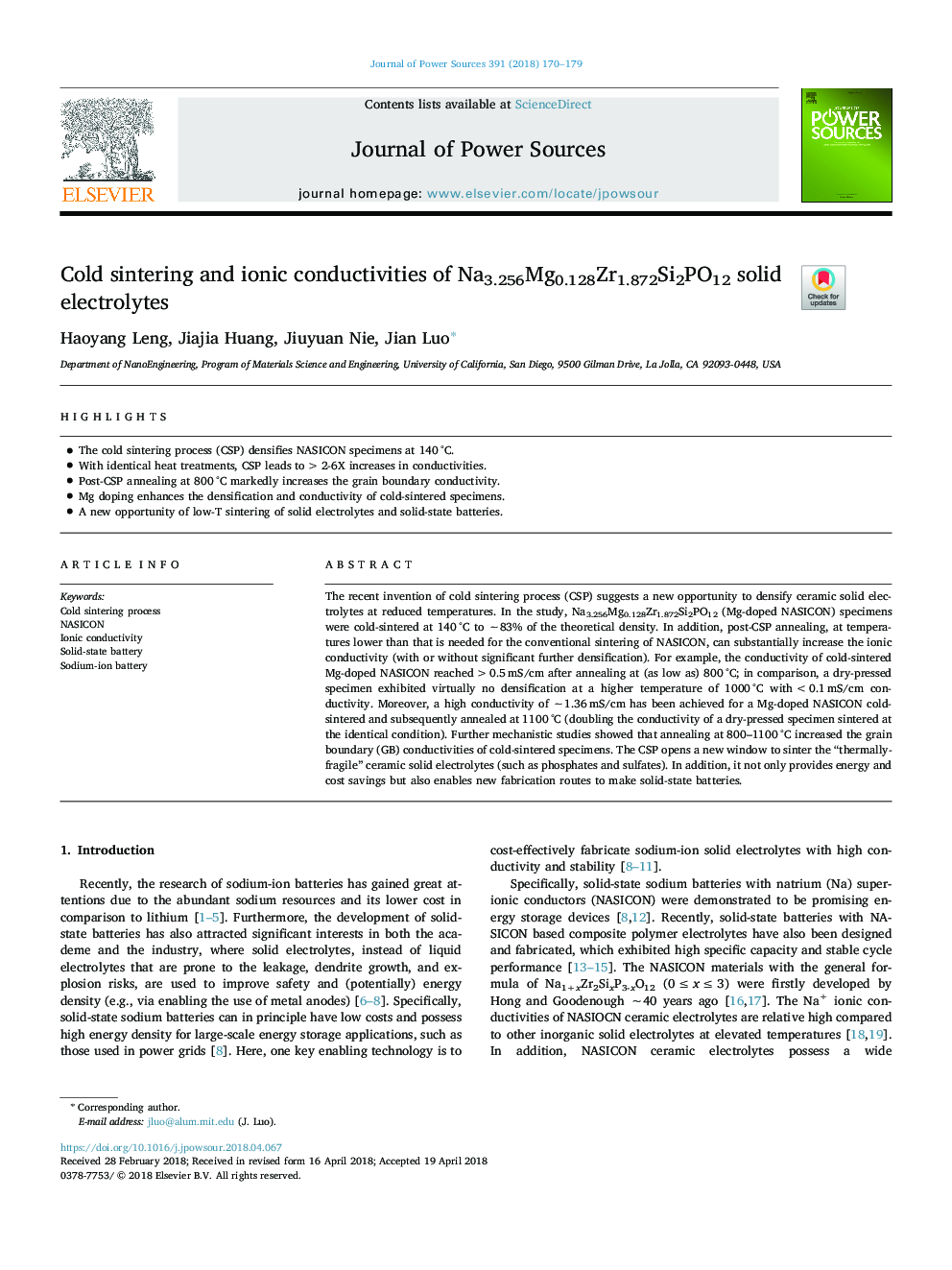| کد مقاله | کد نشریه | سال انتشار | مقاله انگلیسی | نسخه تمام متن |
|---|---|---|---|---|
| 7725096 | 1497841 | 2018 | 10 صفحه PDF | دانلود رایگان |
عنوان انگلیسی مقاله ISI
Cold sintering and ionic conductivities of Na3.256Mg0.128Zr1.872Si2PO12 solid electrolytes
دانلود مقاله + سفارش ترجمه
دانلود مقاله ISI انگلیسی
رایگان برای ایرانیان
کلمات کلیدی
موضوعات مرتبط
مهندسی و علوم پایه
شیمی
الکتروشیمی
پیش نمایش صفحه اول مقاله

چکیده انگلیسی
The recent invention of cold sintering process (CSP) suggests a new opportunity to densify ceramic solid electrolytes at reduced temperatures. In the study, Na3.256Mg0.128Zr1.872Si2PO12 (Mg-doped NASICON) specimens were cold-sintered at 140â¯Â°C to â¼83% of the theoretical density. In addition, post-CSP annealing, at temperatures lower than that is needed for the conventional sintering of NASICON, can substantially increase the ionic conductivity (with or without significant further densification). For example, the conductivity of cold-sintered Mg-doped NASICON reached >0.5â¯mS/cm after annealing at (as low as) 800â¯Â°C; in comparison, a dry-pressed specimen exhibited virtually no densification at a higher temperature of 1000â¯Â°C with <0.1â¯mS/cm conductivity. Moreover, a high conductivity of â¼1.36â¯mS/cm has been achieved for a Mg-doped NASICON cold-sintered and subsequently annealed at 1100â¯Â°C (doubling the conductivity of a dry-pressed specimen sintered at the identical condition). Further mechanistic studies showed that annealing at 800-1100â¯Â°C increased the grain boundary (GB) conductivities of cold-sintered specimens. The CSP opens a new window to sinter the “thermally-fragile” ceramic solid electrolytes (such as phosphates and sulfates). In addition, it not only provides energy and cost savings but also enables new fabrication routes to make solid-state batteries.
ناشر
Database: Elsevier - ScienceDirect (ساینس دایرکت)
Journal: Journal of Power Sources - Volume 391, 1 July 2018, Pages 170-179
Journal: Journal of Power Sources - Volume 391, 1 July 2018, Pages 170-179
نویسندگان
Haoyang Leng, Jiajia Huang, Jiuyuan Nie, Jian Luo,